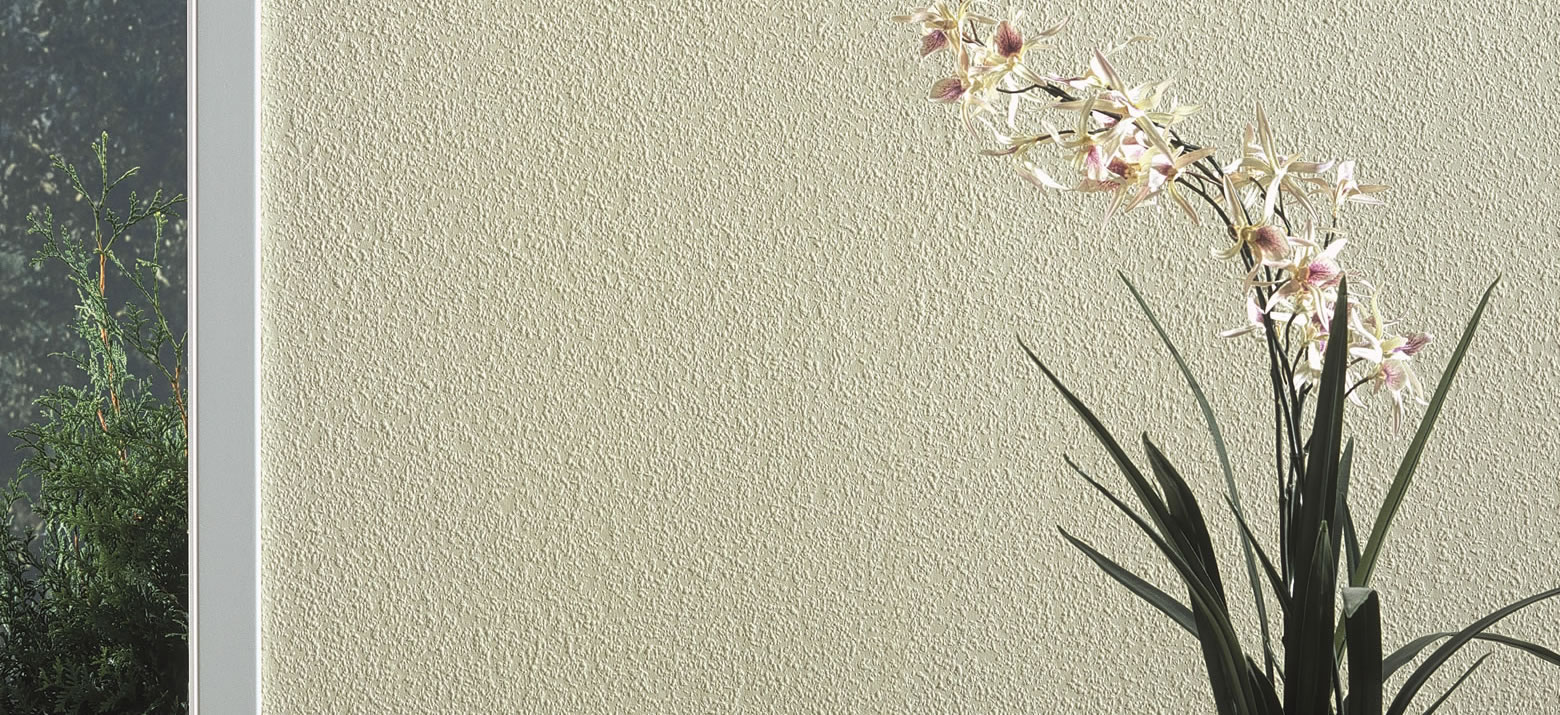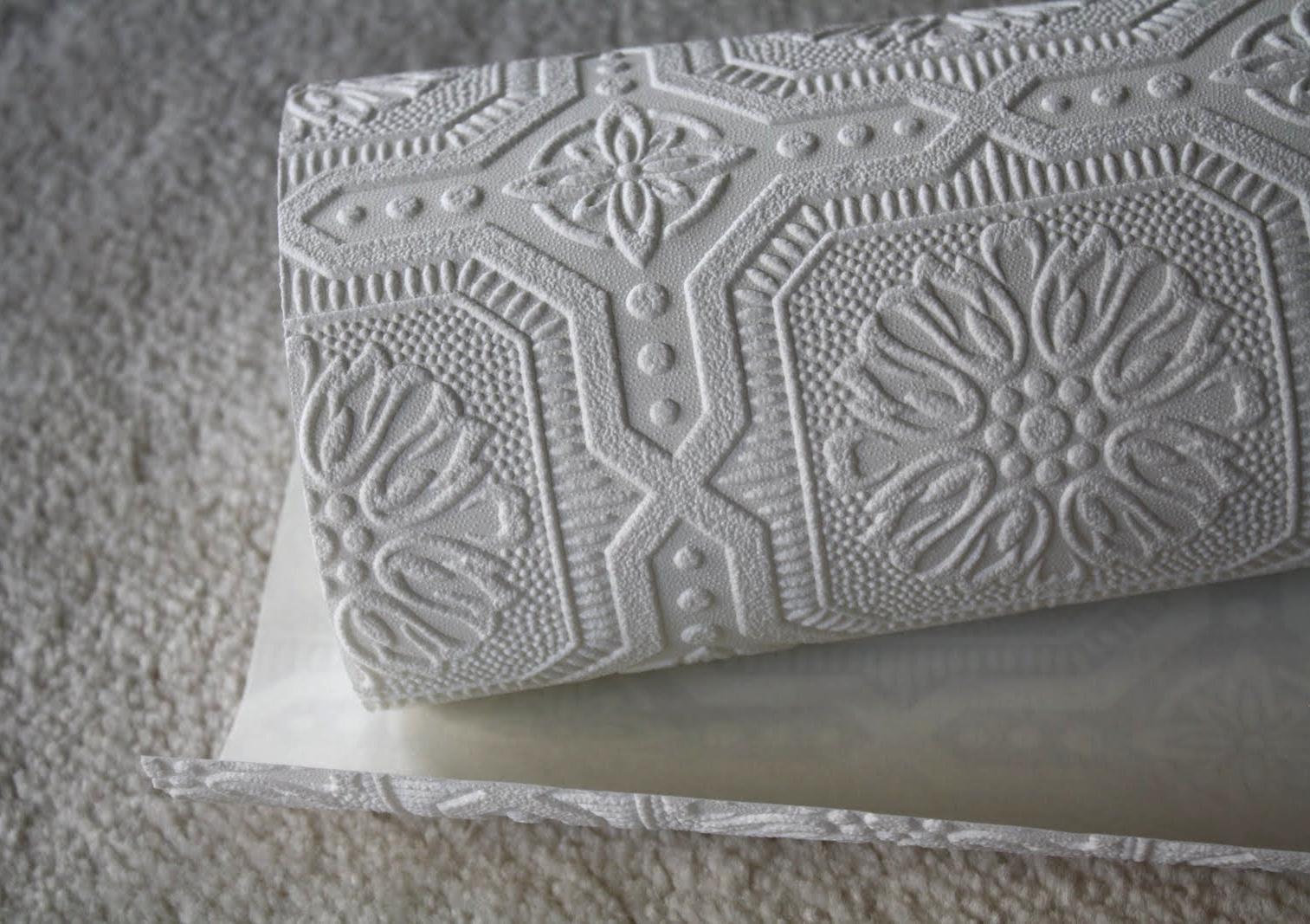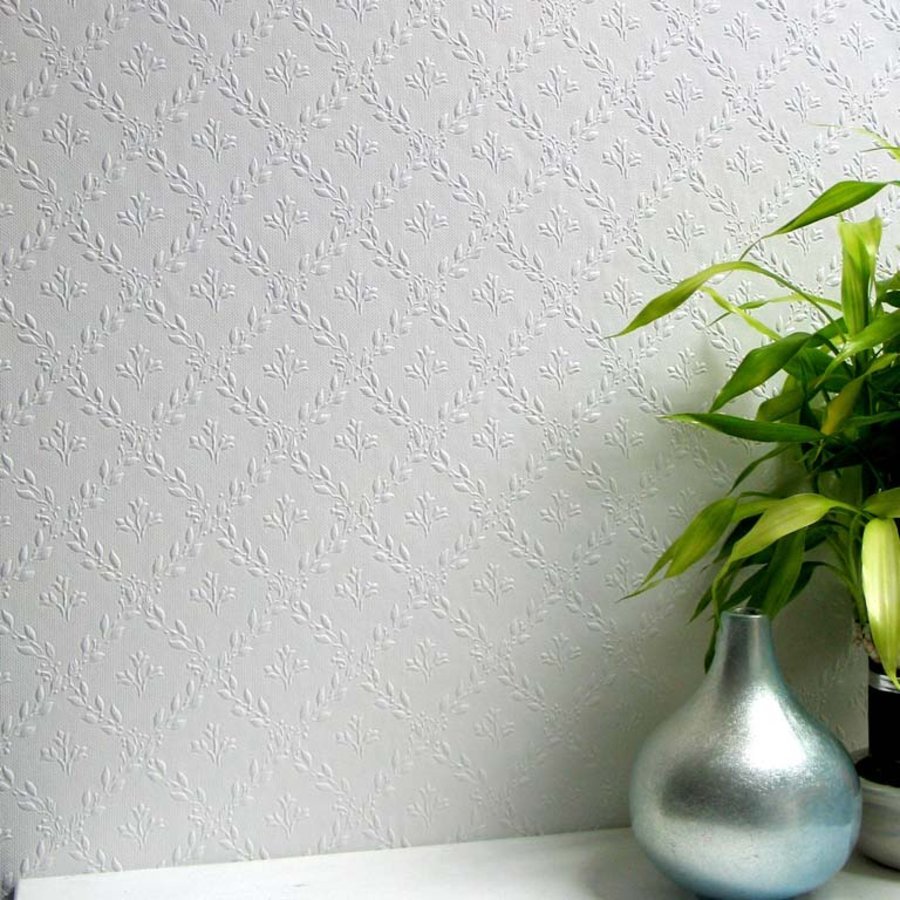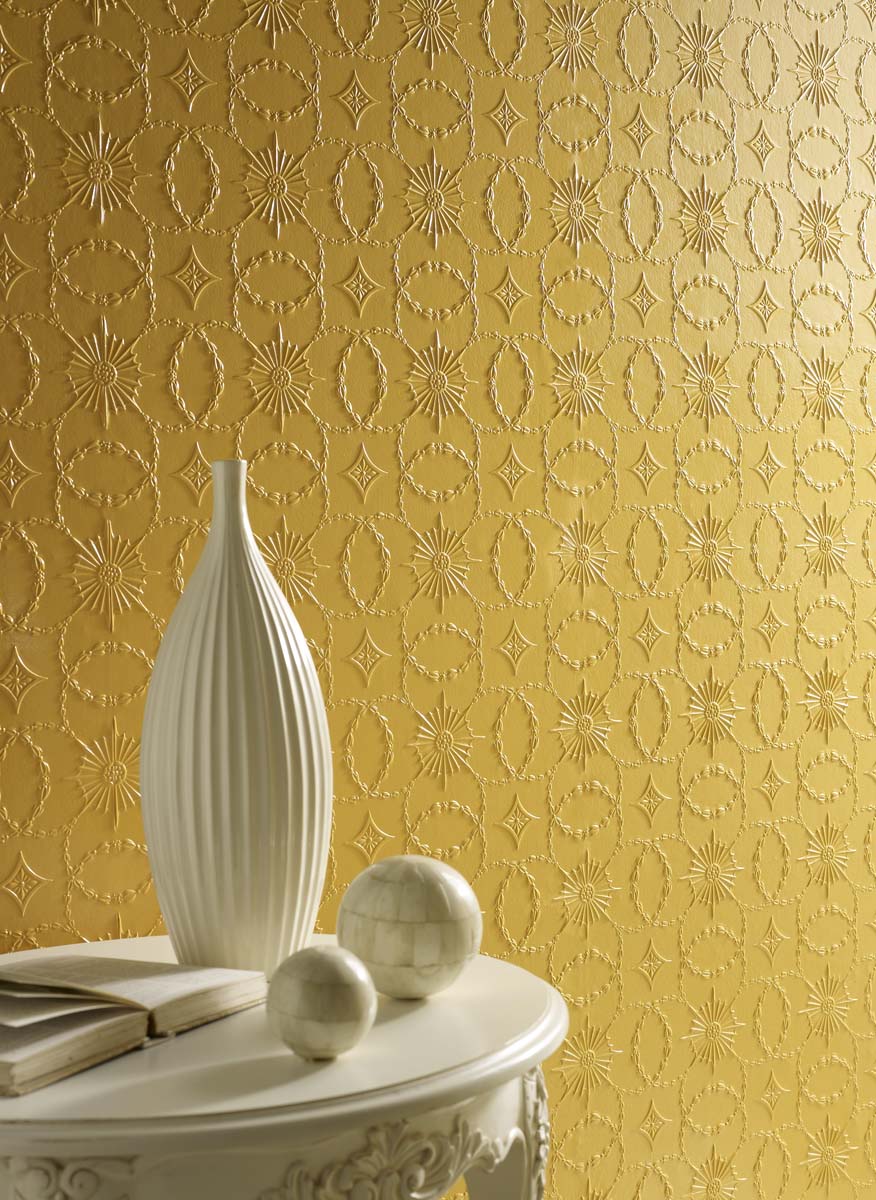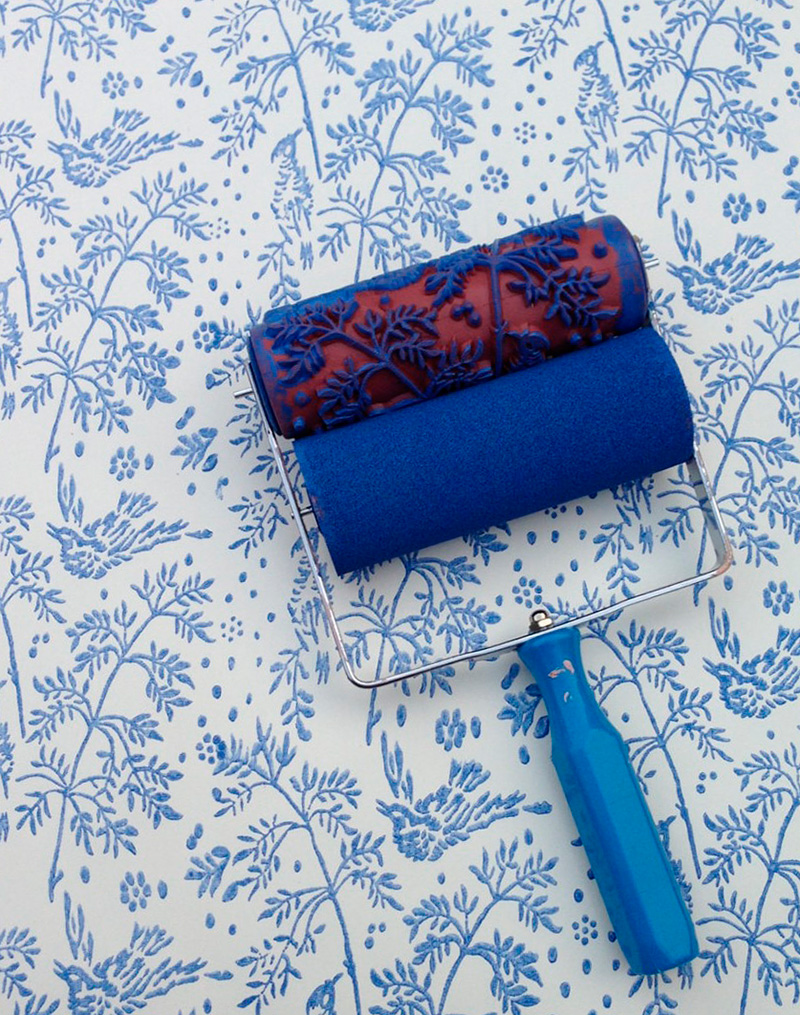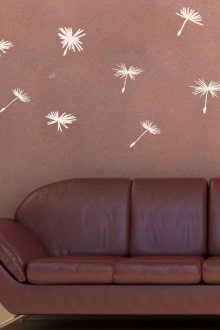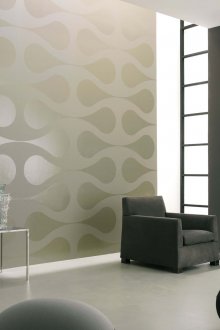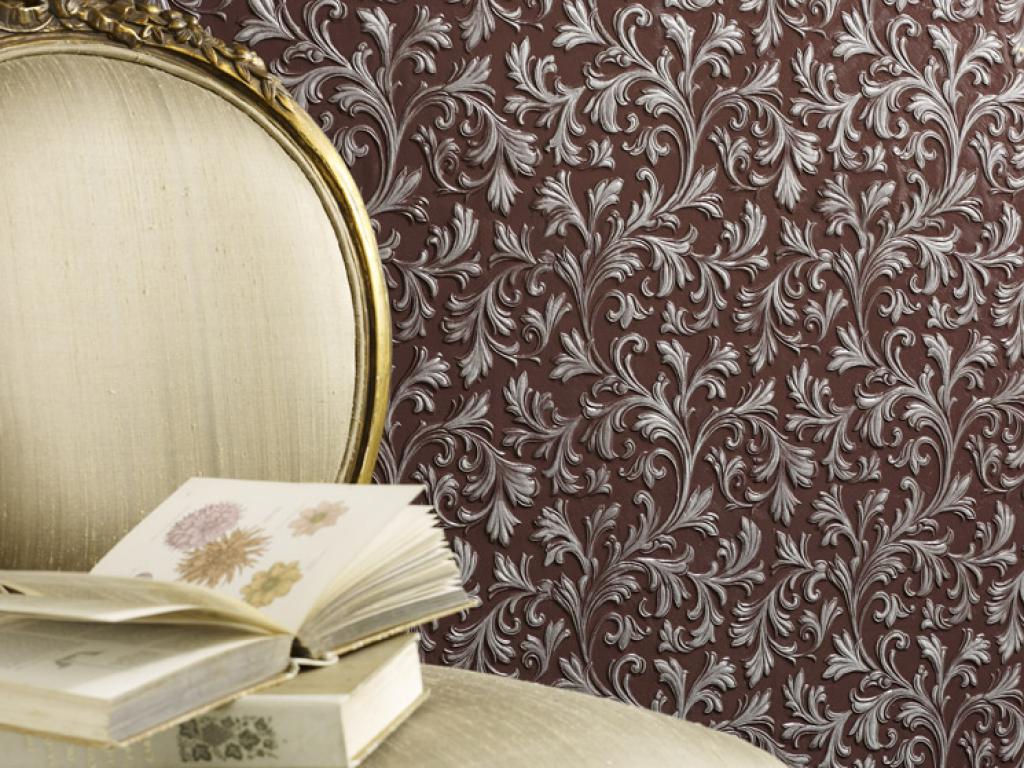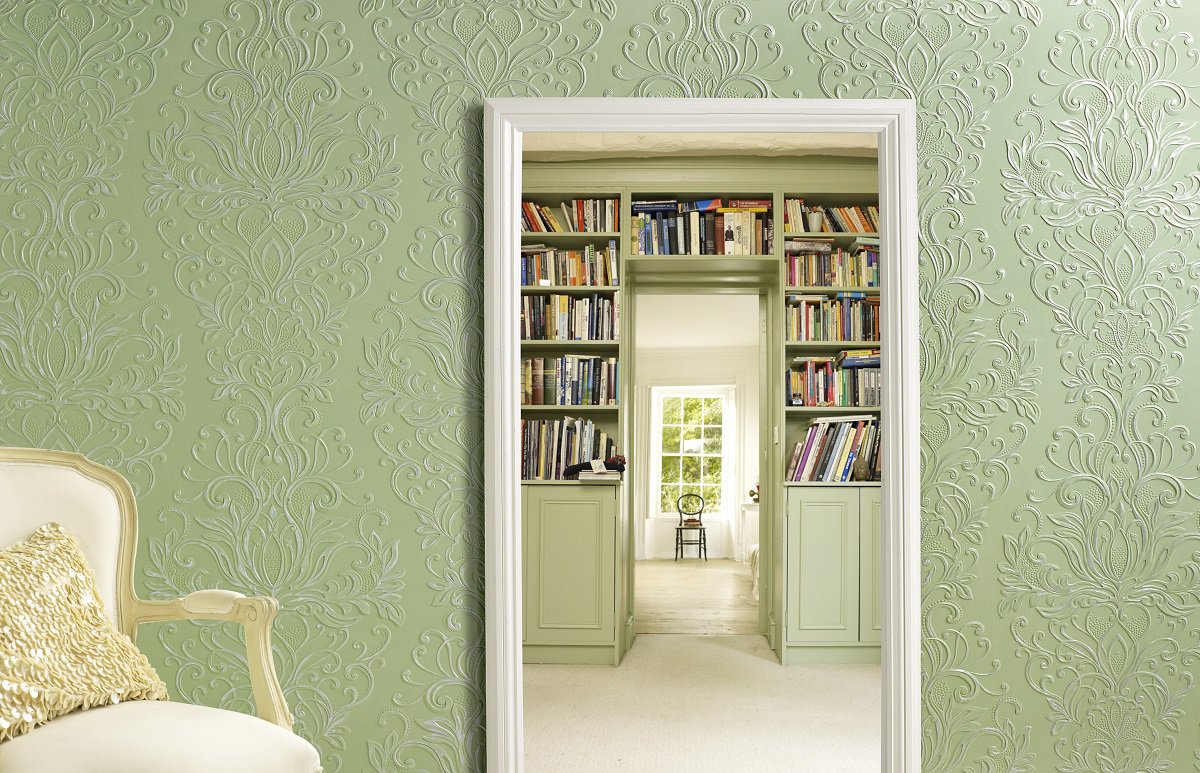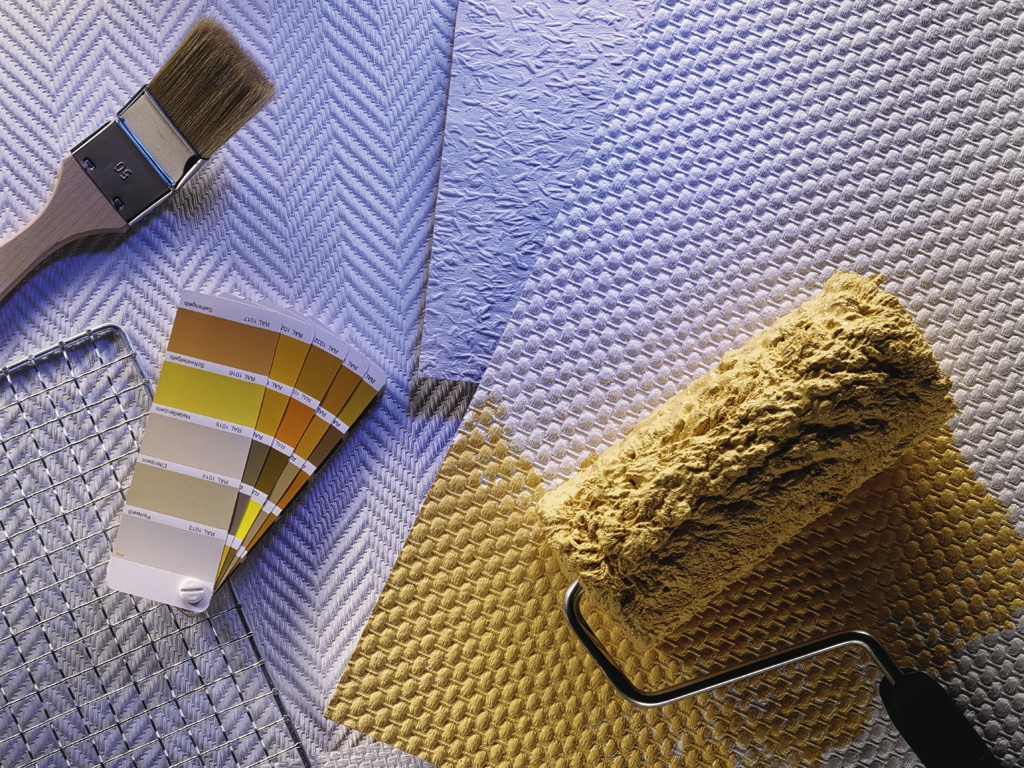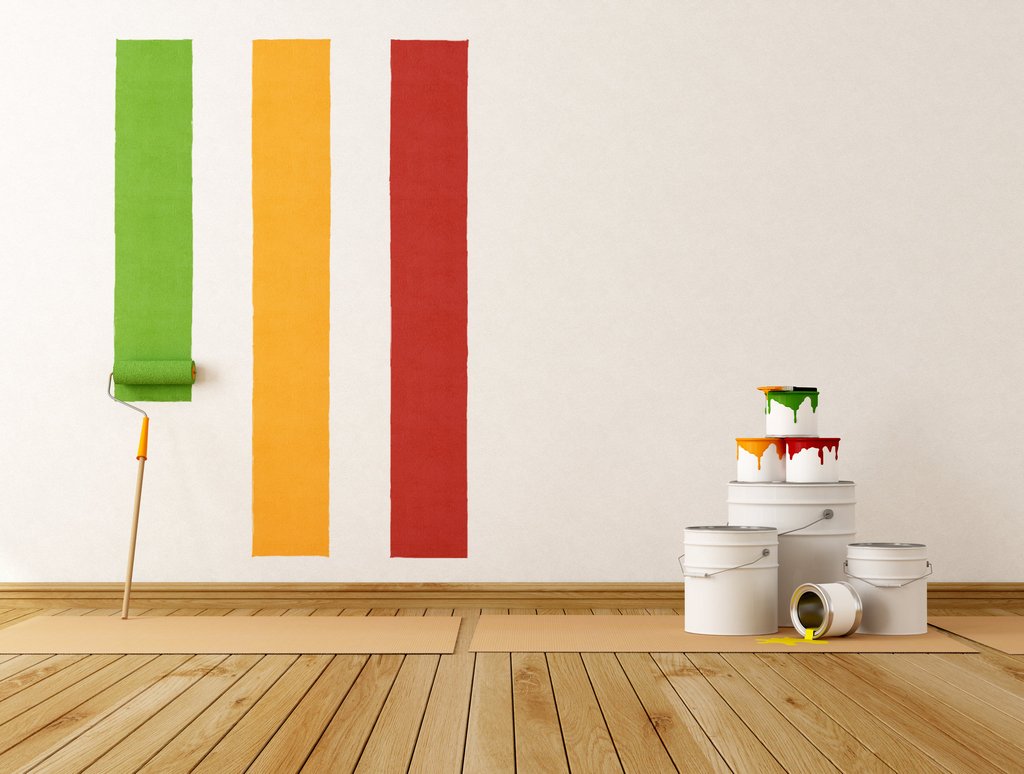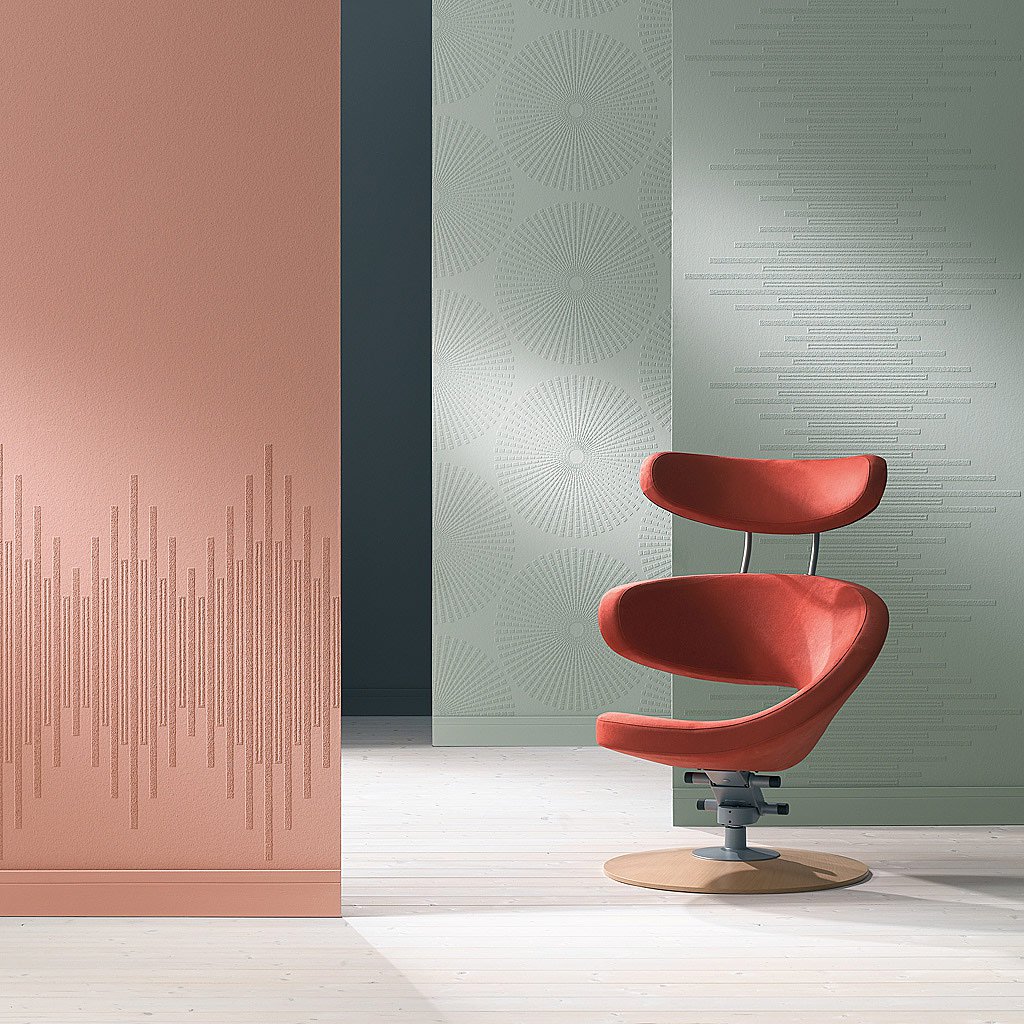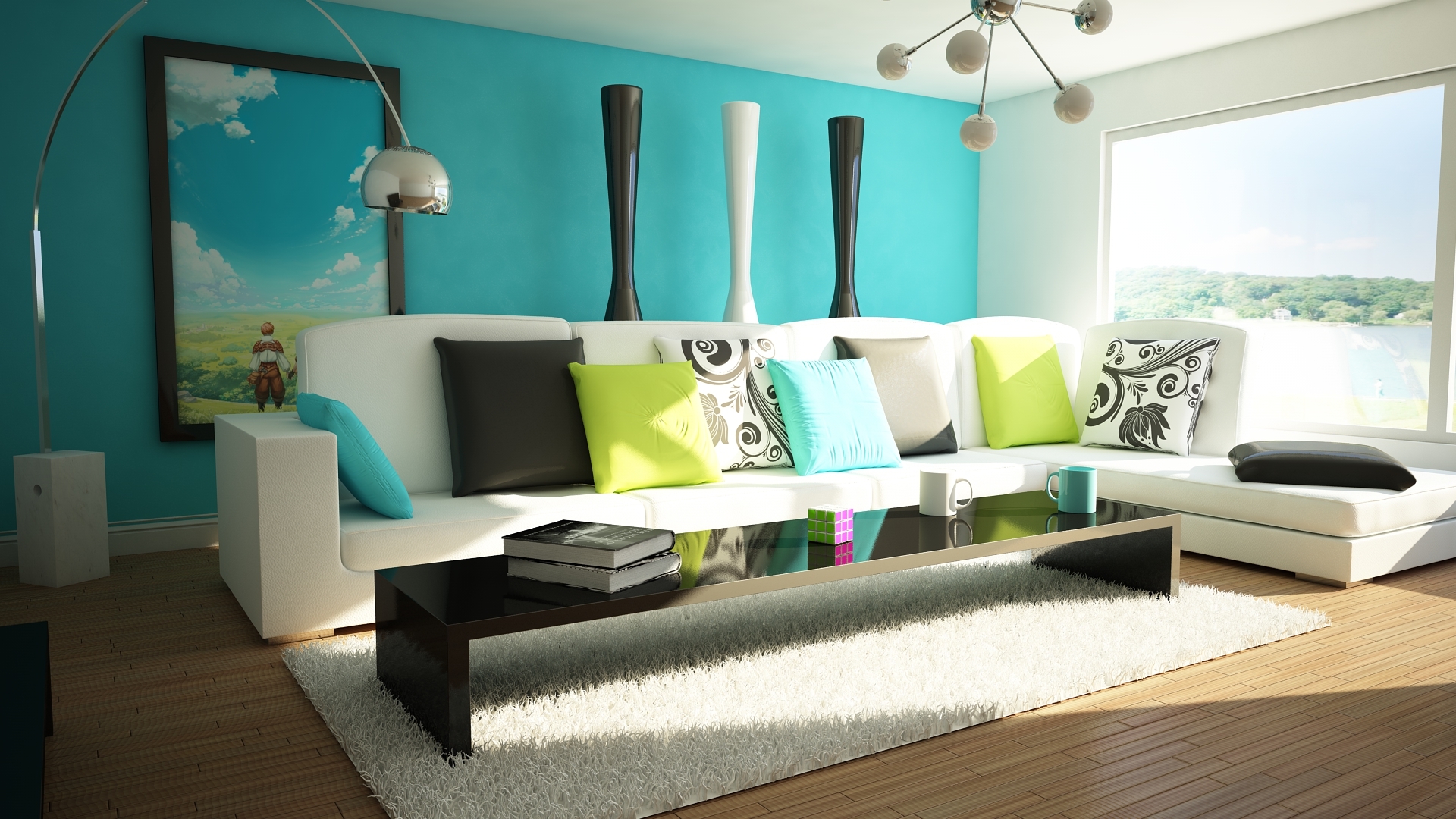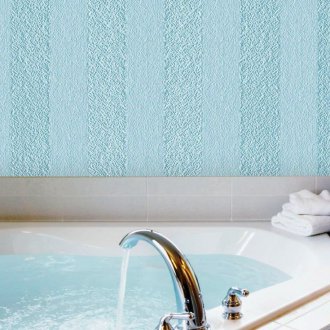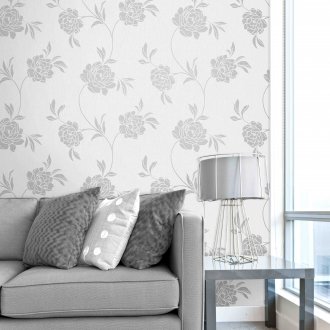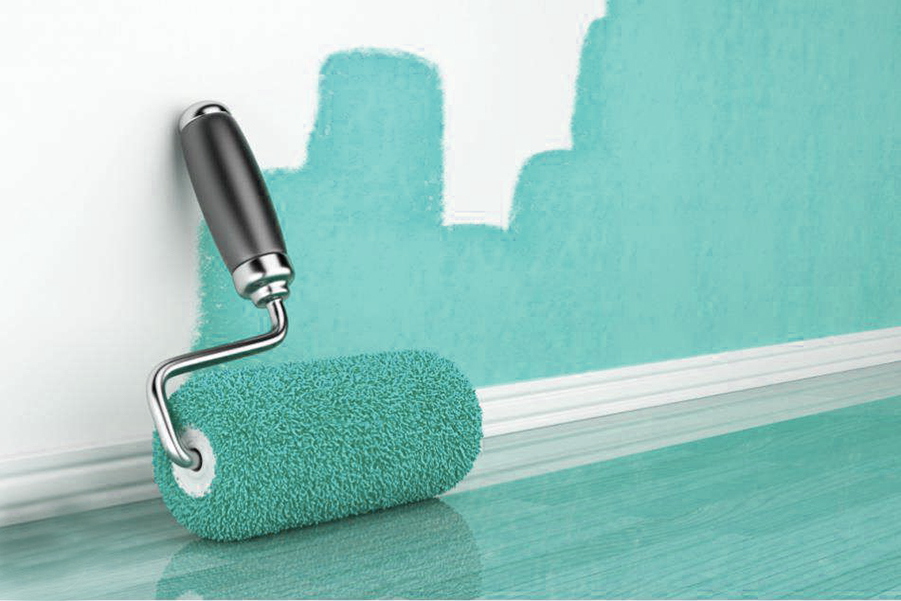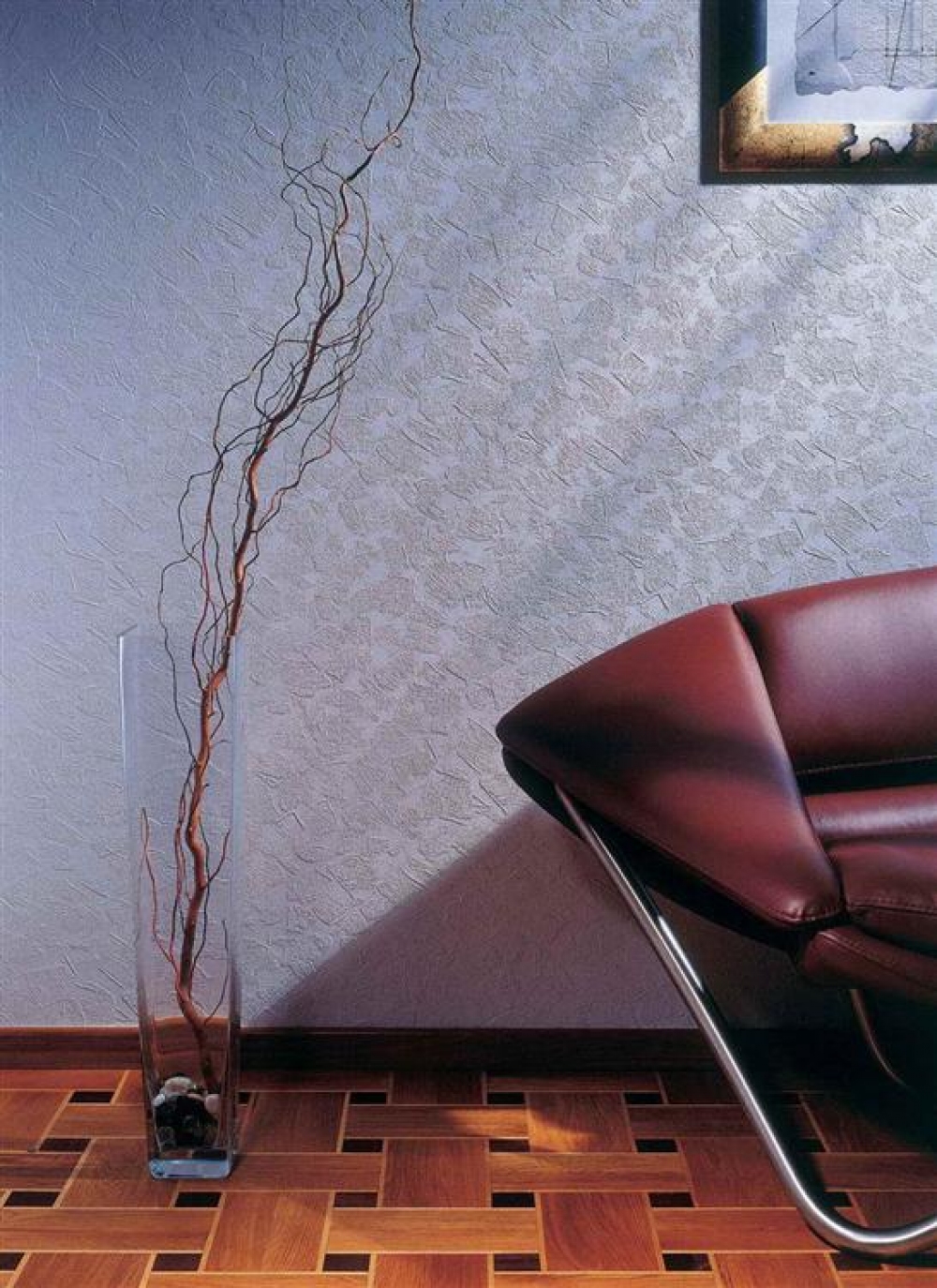Wallpaper for painting: types and decor (24 photos)
Content
Various types of wallpaper for painting are becoming increasingly popular due to the possibility of updating them due to repeated repainting of the walls. For a subsequent interior change, it will be enough just to pick up a new paint, and the design will sparkle with new overflows.
Wallpaper for painting: technical features, “pros” and “cons”
Ready-made wallpaper for painting in the interior of the apartment always looks advantageous, combining the strength of the coatings with an attractive design and the ability to express the master when working with paint. Canvases for staining are always neutral (usually white), pastel colors are also found.
Of course, a matte or semi-matte texture with embossed patterns predominates. Surface gloss is extremely rare. One of the most modern options is a wallpaper with a 3D effect, when a deep relief after painting gives the illusion of a three-dimensional image.
What attracts consumers in this wallpaper?
- Coating strength;
- Environmental characteristics;
- The ability to repeatedly change the design of walls and ceilings by painting wallpaper;
- A variety of color palette of paints;
- Resistance to "burnout" from the sun;
- The ability to mask wall defects;
- Obtaining a water-repellent layer.
It is definitely worth considering some disadvantages of wallpaper for painting: gluing requires additional diligence and strict adherence to the manufacturer's instructions, painting is a good choice of color and quality of the mixture for work.
When working with masters, you will have to pay for their double work: gluing wallpaper on the walls or ceiling and painting them.
Not every landlord will immediately be able to “see” white wallpaper for the walls in color, so the selected and painted version in the store can sometimes be dissonant in the overall design of the room.
As a result, the disadvantages of wallpaper are so lost against the background of their positive qualities that the hands themselves are drawn to update the situation in the house.
Wallpaper options for painting - how to choose the best?
Each owner of the living room sees the future finish in his own way, but there are factors that are important to take into account for everyone.
Invoice Preferences
Choosing textured wallpaper for painting, take into account your plan for the overall design of the room.
In the classics and other variants of strict design, canvases without drawings or with their minimal quantity can successfully fit in.
Large texture is noticeable brighter. It’s not worth gluing such wallpaper in the corridor or in small rooms, it’s better to choose here options with a small “sketch” and a smooth surface.
For a pronounced texture, you can not choose paint with gloss. The best choice is matte or semi-matt options.
Smooth wallpaper for painting is easier to paint. On them you can draw your own drawings. Textured paintings "personal creativity" do not accept.
Types of Wallpaper
| Type of wallpaper | Important Features |
|---|---|
| Paper | Acceptable paper wallpaper for painting only type "duplex". Staining gives them a certain resistance to mechanical stress and low moisture resistance. Canvases fade less in the sun.The best paper wallpapers for painting are shades of milk, pastel or just neutral colors. Suitable as ceiling wallpaper for painting. |
| Vinyl non-woven based | You can use vinyl wallpaper for painting 3 types: foamed vinyl, compact vinyls (hot stamping) or rubberized canvas. A great option for the kitchen and hallway. They do not fit into the nursery, they will not work in the bedroom in the best way, since they do not allow air to pass through well. At the time of gluing, they are stretched, when dried, they return to their previous sizes. |
| Non-woven | Non-woven wallpaper for painting has a polymer coating. High-quality decorative paintings for different rooms, equally decorate the interior of the living room and kitchen. Eco-friendly, vapor-permeable non-woven wallpaper for painting perfectly mask problem walls, are not subject to deformation. Paint is best applied in 2 layers, slightly different in shade. Suitable as wallpaper for painting on the ceiling, especially in new buildings. Glued to any surface. Strength gain after staining. |
| Fiberglass | The colors of the canvases are usually white, sometimes pink, light chocolate and other calm tones. They will look equally well in the bathroom, living room and any other room. Cloths instantly adhere to the surface, so they need to be trimmed very quickly. Cullets are painted one day after complete drying, preferably with a soft roller made of fur. The strongest, beautiful, textured wallpaper for painting, eco-friendly and perfectly washable. They practically do not burn and delight with the richness of design. Good manufacturers make special glue for their wallpaper. |
| Linkcrust | Material of a high price category. Very durable and completely safe for health. Dries about 2 months. The wall section (or the whole room) pasted with linkrost will stand "as good as new" for an unusually long time. There is no limit to the number of repaints, if they are done correctly. A suitable selection of wallpapers for the living room, bedroom or hallway. As a kitchen option, they are used very rarely, in extreme cases, light colors with a minimal pattern are chosen. |
Permissible painting liquid wallpaper after drying. With cosmetic defects, it is much easier to apply a coat of paint than a major repair.
Staining rules
The main rule of coloring is that before painting the wallpaper completely, you should definitely try the paint on a small shred.
Paint selection
Paint consumption depends on the structure of the wallpaper. Usually applied in 2 layers, cheaper options are painted three times.
| Type of wallpaper | Suitable paint |
|---|---|
| Paper, non-woven | Glossy, matte water emulsion. |
| Fiberglass | Latex (water dispersible), acrylic. |
| Lincrusted | Oil, water emulsion. |
Latex paints - environmentally friendly, waterproof, wear-resistant, odorless, dry quickly after opening. The drying time on the wallpaper is three days. PVA-based latex paint has reduced moisture resistance and economical consumption.
Paints on acrylic resin - they are not afraid of the sun, highly elastic, resistant to abrasion, dry quickly, are called "breathing" in everyday life. They can be neatly cleaned wet. The best option for coloring.
Water emulsion formulations are environmentally friendly, economical, and odorless. They have low moisture resistance. Matte tones well hide surface defects. Convenience of glossy paint in the formation of a resistant film that protects from moisture.
How not to get lost in a variety of colors?
Any chosen wallpaper colors should be in harmony with the overall design of the room. When staining, a number of "chips" must always be kept in mind so as not to spoil the overall picture:
- Large rooms and hallways are painted with matte paint;
- Semi-matte tones are recommended for small rooms;
- Glossy coating is used in rare cases;
- Light colors give comfort and visual expansion of space;
- The vertical strip “raises” the walls;
- A large ornament reduces a room, a fractional one increases it.
Psychological characteristics of colors
| Color | Value |
|---|---|
| White | Sincerity, dedication, lightness. |
| The black | Creative process, activity. Option for Japanese style. |
| Gray | Judiciousness, erudition, willpower. The best option for the work area. |
| Red | Leadership aspirations. Especially “productive” with white or gray. |
| Yellow | Honesty, confidence. Maximum stimulation of mental work. |
| Green | Equilibrium, improvement, responsibility, constancy and progressive development. |
| Pink | Glamorous, in a very moderate amount creates comfort and coziness. |
| Orange | Power, energy, condescension, positive. |
| Blue | Strength of mind, discipline, perseverance, faith in ideals. |
"Craftsman" recommendations
Depending on the type of wallpaper, their technical characteristics, paint properties and other factors, staining methods may vary. Most often, with wallpaper for painting work one of the five most affordable ways.
- Cloths are glued on the surface, dried for two days. Processed with a "water emulsion" using a roller with an elongated pile.
- They work in the same way as above, but the paint is re-applied with a velor roller. You can take a different color, combine matte and glossy paints.
- “Vinyls” and non-woven wallpaper for painting can be painted in a more complex way. After coloring, without waiting for the second drying of the wallpaper, the coloring pigment is erased from the relief with textile material. The result is a heterogeneous color structure.
- The inside of the “vinyls” is painted before gluing the paintings on the walls. After soaking, the dye juicyly depicts the embossed part of each roll of wallpaper on the wall or ceiling. It is important to dry the inside thoroughly before painting on the front side.
- They paint the wall and paste wallpaper on top of it. The glue partially dissolves the dye, due to which the base is impregnated, shading from the decorative layer. The method is professional, "dummies" in decoration is not recommended.
Knowing how to choose a wallpaper for painting, you can easily adjust the design of the entire room and create a different mood for yourself. Buy for home the best option that you like today, based on environmental safety, durability and price.
